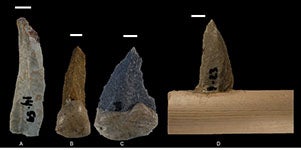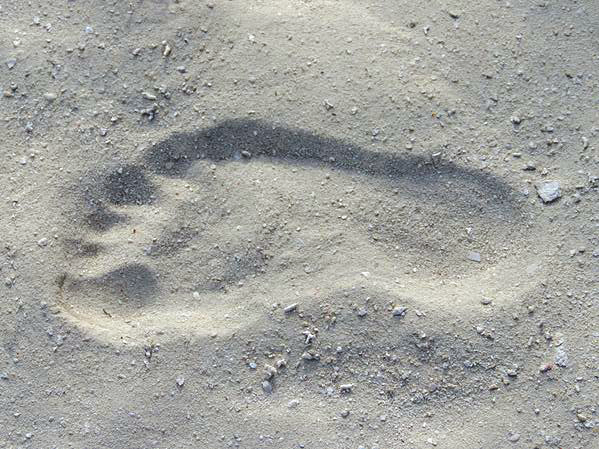
Right tool for the job
 Not every type of rock is good for making flakes. Like Goldilocks’ porridge, some are too hard, some are too soft, and some are just right. Our ancestors had to figure this out and start picking out only the stones that were good for specific jobs.
Not every type of rock is good for making flakes. Like Goldilocks’ porridge, some are too hard, some are too soft, and some are just right. Our ancestors had to figure this out and start picking out only the stones that were good for specific jobs.
So how do we know what kind of jobs stone tools were being used for in the past?
When stone tools are used, they get dull and worn out. When this happens, small marks and scuffs are left on the edges of the tools. Archaeologists do experiments where they use stone tools in the same ways as they think tools were used in the past. They can then study the small scars, polishes, and residues that form on the experimental tools. This gives them an idea of what caused the prehistoric stone tools to become dull. Types of studies like these are called use-wear analysis.
 Animal bones at archaeology sites are also used to tell what tools were used for. Cutting meat off animal bones leaves small marks on the surface of the bone. These cutmarks are visible under a microscope. Finding cutmarks tells us that those bones were part of a hominin's meal and that stone tools were used to butcher the animal.
Animal bones at archaeology sites are also used to tell what tools were used for. Cutting meat off animal bones leaves small marks on the surface of the bone. These cutmarks are visible under a microscope. Finding cutmarks tells us that those bones were part of a hominin's meal and that stone tools were used to butcher the animal.
Be Part of
Ask An Anthropologist
By volunteering, or simply sending us feedback on the site. Scientists, teachers, writers, illustrators, and translators are all important to the program. If you are interested in helping with the website we have a volunteers page to get the process started.

